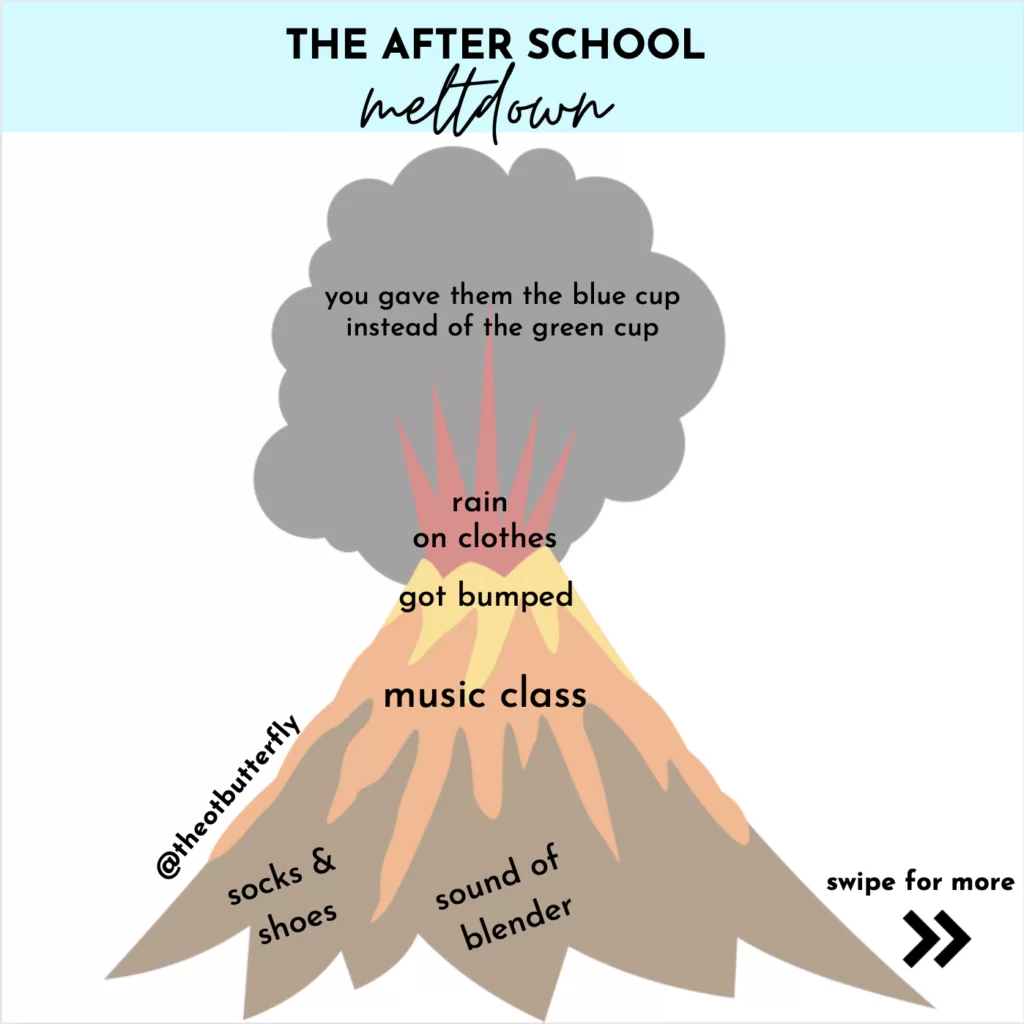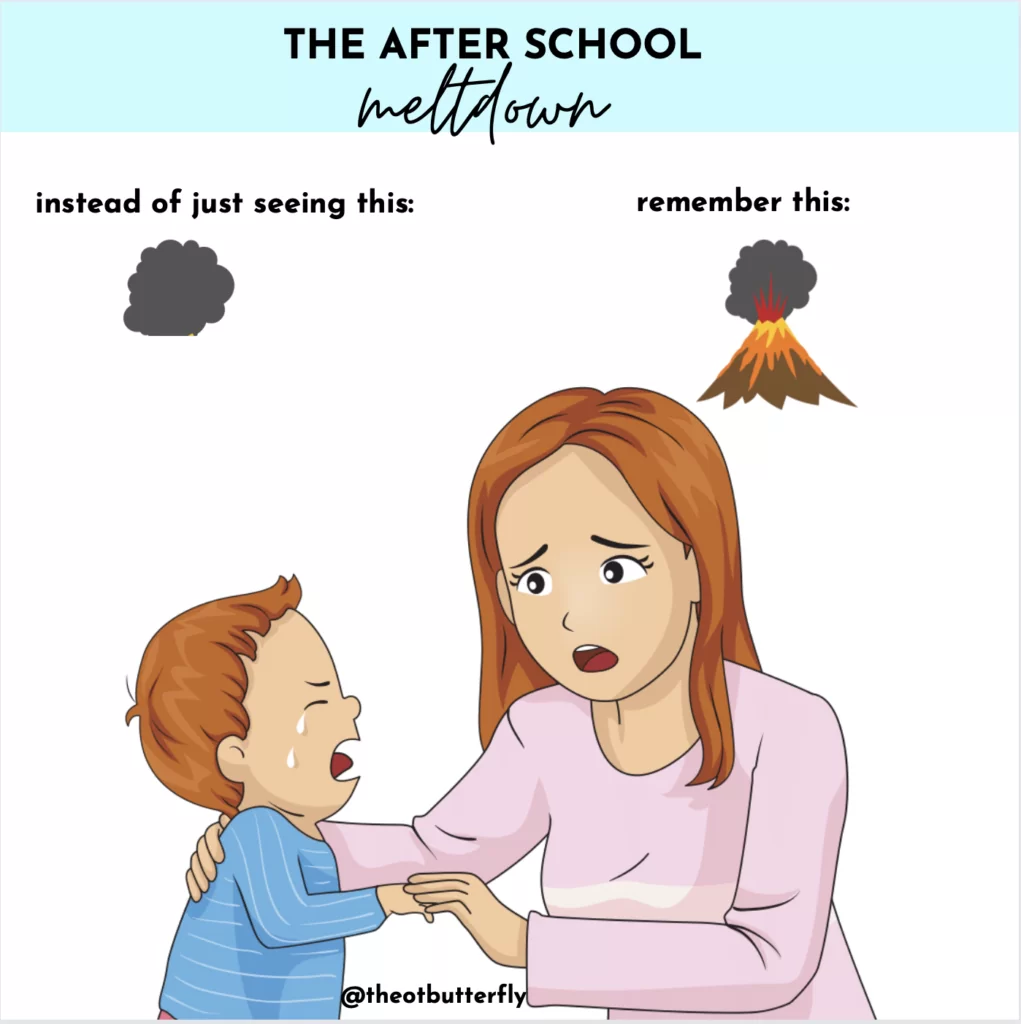Get your FREE sensory profiles cheat sheet >>click here<<
What You Need to Know About a Sensory Meltdown

Do you know a child or toddler who seems to go from 0-100 without a noticeable trigger? Does that kiddo or toddler have sensory sensitivities? You might be dealing with a sensory meltdown.
What is a sensory meltdown?
Sensory meltdowns are what I consider to be extreme temper tantrums that have a sensory trigger to them. These typically involve extreme aggressive behaviors (head banging, hand biting, scratching or pushing others), and require a lot of assistance to recover.
Often, even “giving in” to what the child is requesting does not end the meltdown. The meltdown continues on until they feel regulated again, which could take up to an hour (in my household) depending on the child.
What triggers a sensory meltdown?
For some children with sensory sensitivities, they could be triggered by something obvious, such as water that splashed on their sleeves. However, even after you change their shirt or dry it off, it still takes some time for them to “come down” from their meltdown.
For other children (like my daughter who has tactile sensitivities), sensory meltdowns are triggered by the build-up of sensory input throughout their day and the “trigger” might not appear to be sensory related at all, but rather was the straw that broke the camel’s back.
Consider how much imposed sensory input bombards you on a daily basis, especially if you’re in school. The sound of the school bells and children screaming, the feel of glue on your fingers or that classmate who keeps bumping into you during P.E. Or even the hyperactivity of the music class. What about that dog barking outside your window?
As children are expected to participate in school and ignore all of these offensive sensory input (especially to those who are sensory sensitive), something as small as getting the wrong cup after school, or getting chicken tacos instead of beef tacos like they expected could trigger a sensory meltdown.
What can I do when my child has a sensory melt down?
First and foremost, it’s important to truly recognized differentiate when your child is having a sensory meltdown vs. a tantrum. This way, your expectations are set and you are entering the situation with a different lens on. It might also benefit you from understanding what environments might pose the most triggers so you can plan accordingly, or avoid particular situations altogether.
Typically, children who are sensitive to sensory input benefit from being in quiet, dark, enclosed areas to “decompress” from sensory overload. Sometimes building a quiet sensory corner in a house is helpful (click here for my amazon affiliate link to my favorite sensory corner tools for the home or classroom). If you’re out in public, sometimes this means going to the car to take some deep breaths.
For me, as mom to a toddler with tactile defensiveness and generalized anxiety, I have to plan my outings strategically- getting places early (or leaving early) to avoid crowds, preparing my bag with our sensory tools such as calming music and chewy snacks, and mentally preparing myself to be able to help co-regulate her in the moment.
Find what works for you and your child and make sure there’s a way to make those tools accessible out of the home.








